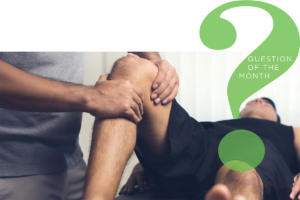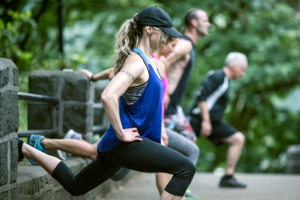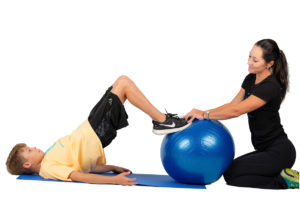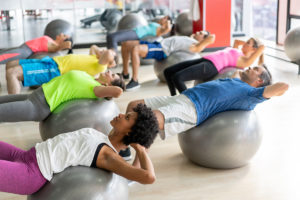Exercise Program Design
Whole-Body Vibration Training: Ride the Wave
This article reviews the basics of vibration training, explores relevant research and provides practical programming ideas.
Kids Thrive in Nature
It turns out that playing in nature positively affects physical and mental development in children, according to a recent studies.
Prehab: A Potential Fit Pro Opportunity?
Prehabilitation—or “prehab”—turns out to be a good investment of both time and money, and fitness pros are uniquely positioned to offer this service.
High-Quality Evidence for Tai Chi’s Benefits
Tai chi has proved to be a safe, effective and enjoyable training method for overall health improvement among adults with numerous chronic conditions.
Steps and Weight Loss
New research shows that, while increasing steps to 4,400 steps per day enhances longevity (and walking more does have numerous health benefits), adding steps without increasing intensity or changing other lifestyle habits may not lead to weight loss.
60-Second HIIT Beats 30-Second HIIT
Research shows that when recovery breaks during high-intensity interval training are too long, they undermine the effectiveness of the training.
New Music and Exercise Research Findings
New details have emerged on how to use music to enhance training. Tunes with a fast tempo—between 170–190 BPM—are most beneficial for endurance exercise
Strength Training: Should You Mix It Up?
A study published recently found that varying exercise selection increased motivation to train and produced equivalent improvements in muscular adaptations.
Tapering for Resistance Training: Less Is More!
Endurance athletes have used tapering for years; now there’s evidence that exercise enthusiasts and strength and power athletes can benefit from tapering phases in their resistance training (RT) programs. So, is tapering right for your clients? And when it comes to RT, can less work lead to more success? Here’s what the research tells us.
Periodization for Maximizing Hypertrophy
Much of the periodization literature to date has centered on the strength outcomes and sports performance of athletes striving to balance the needs of practice, conditioning and competition (Bartolomei et al. 2014). But many recreationally active clients seek to gain muscle size in personal training sessions, and few studies have evaluated whether a periodization model should be used in a hypertrophy-focused resistance training program for these fitness enthusiasts. This article highlights the best research available to help answer an important question: Should you periodize a client’s RT plan to maximize skeletal muscle hypertrophy?
Core Training for Kids
There’s a tremendous need, now more than ever, to hook kids on fitness and equip them with good lifestyle habits. A child’s growing body needs regular movement in order to function optimally. Since the core is essentially “ground zero,” it’s a fitting place to start, because strong core muscles assist with posture and reduce the chance of injury. The key to a healthier tomorrow is to be proactive and get kids involved today.
May 2020 Question of the Month: Do You Offer Interval Training Programs?
Are you offering a variety of interval training programs? For example, are you putting programs in the pool or offering combinations of HIIT aerobic and resistance training, reduced-exertion options, or programs of different lengths (e.g., 30 or 45 minutes)?
Interval Walking in Midlife and Beyond
For middle-aged and older adults who may not want to run, new research in the Mayo Clinic Proceedings (2019; 94 [12], 2413–26) shows that high-intensity interval walking effectively improves health and fitness. The protocol for this type of walking is 3 minutes at 70% of VO2max followed by 3 minutes at 40% of VO2max, repeated for 5 or more sets.
Is REHIT Training Effective?
REHIT is a new training approach influenced by high-intensity interval training (HIIT), particularly its time-saving aspect. While a typical HIIT program lasts 30 minutes, a REHIT session consists of two or three 10- to 20- second sprints, separated by up to 3 minutes of recovery, in a 10-minute cardio session. Some experts believe this reduced-exertion approach may attract people who are inactive, have a chronic disease or simply lack time.
Recreational Running and Type 2 Diabetes
Here’s more support for the benefits of recreational running. Data analysis from more than 19,000 male and female adults over an average of 6.5 years showed that leisure-time running was linked with a reduced risk of developing type 2 diabetes.
Fast-Tempo Music Motivates During Exercise
Keep refreshing your up-tempo playlists. Fast-tempo music increases overall exercise tolerance and reduces neuromuscular fatigue, according to a study reported in The Journal of Strength and Conditioning Research (2019; doi:10.1519/JSC.0000000000003417).
Build Fitness Without Demolishing Joints
High-impact exercises — such as burpees, jumping jacks and other moves that get both feet off the ground simultaneously — can help build strength and endurance and shed fat quickly.
As a result, they’re often incorporated into high-intensity interval training (HIIT) workouts, which have gained recognition because they burn an impressive number of calories in a short amount of time and boost metabolism for up to 48 hours after the workout’s over through the afterburn effect.
Fitness for People With Fibromyalgia
Do you work with a client who has fibromyalgia? Here’s some good news: In a study of 466 women with fibromyalgia, researchers found that those with higher levels of overall fitness also experienced higher health-related quality of life (HRQoL). Spanish researchers from various institutions conducted the study to determine which components of fitness would be most valuable to target in people with fibromyalgia.
Any Amount of Running Boosts Health
Get motivated to reboot your clients’ running programs for springtime. The good news: Any amount of running is associated with a 27% lower risk of death from any cause, a 30% lower risk of death from heart disease and a 23% lower risk of death from cancer, according to a study reported in the British Journal of Sports Medicine (2019; doi:10.1136/bjsports-2018-100493). An international team of researchers came to this conclusion after reviewing 14 studies that included more than 232,000 participants.
Who Benefits Most From Visualization Training?
Do you have clients who seem to be able to deeply imagine how a movement would feel in the body? If you do, kinesthetic imagery training may help them improve their sports skills. New research shows that golfers who could imagine the physical feeling of putting while visualizing the action improved their subsequent ability to putt more accurately.



















